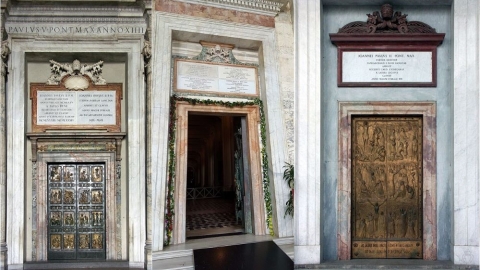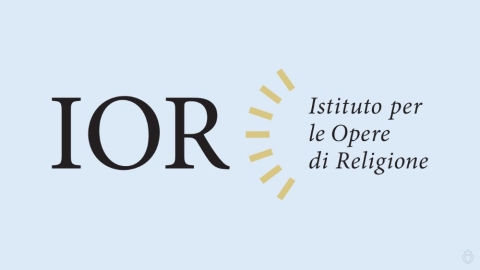Supporters of the Ordination of Deaconesses are Disillusioned

L’avion ramenant le pape François de son voyage en Roumanie et Macédoine du Nord
Pope Francis has stated that the international commission of specialists in charge of studying the status of deaconesses in the very first centuries of the Church, were not able to conclude that women at that time could have received diaconal ordination like that which the other sacred ministers received.
On the plane that brought him back from his apostolic trip to the Balkans on May 7, 2019, the Holy Father took advantage of the now traditional press conference to focus on the issue of a female diaconate during the time of the nascent Church.
The Roman pontiff explained that the specialists commissioned by the Holy See have found evidence that deaconesses exercised certain functions, especially that of women’s baptisms. This can be understood with the knowledge that at that time baptism was done by immersion and not by a simple ablution like today.
The commission, however, failed to reach a conclusion on the question of a hypothetical ordination that might have been received in that case by women called to serve as deaconesses.
“What is fundamental is that there is no certainty about an ordination using the same formula, with the same goal, as male ordination,” says Pope Francis, adding that the rite establishing the deaconesses “rather resembles what is today the abbatial blessing of an abbess.”
When the Holy See Reinvents the Wheel
It is still quite amazing that it took an international commission of experts to decide this question. It would have been enough to consult the article on “Deaconesses” in the Dictionary of Christian Antiquities, by Fr. Martigny, Paris, 1877, pp. 243-244, to arrive at the same result. That we can judge.
The institution of deaconesses dates back to the time of the apostles (St. Paul's Epistle to Romans 16:1). Their principal functions were: 1) to direct virgins and other widows; 2) to guard the door of the church reserved for women; 3) to instruct female catechumens; 4) to assist the bishop with the baptism of women (baptism by immersion as mentioned above); 5) to take care of poor and sick women; and 6) to be present at private conversations of the bishop, priests, or deacons with women.
The Apostolic Constitutions (the oldest of which date back to the end of the first century, and the passage which occupies us to the third century) give a formula for the blessing of deaconesses which clearly differs from the formulas for the ordination of deacons of that era. In the second century, some of the deaconesses wanted to fulfill roles reserved to the clergy. Pope Soter intervened in A.D. 175 to severely suppress these claims, by a decree which has remained law. It appears that in the Eastern churches, the discipline was less severely applied.
However, as of the fifth century, most churches no longer had deaconesses, and by the tenth century everyone had forgotten even the name. This argument alone is sufficient, because the Church, on her own authority, would never have abolished a sacrament established by Christ. Those who dare to claim the opposite are blinded by feminist or modernist prejudices, which have nothing to do with Catholic tradition and divine faith.
Related links
- Suisse et Etats-Unis : 16 femmes "ordonnées" le 24 juin et le 31 juillet
- « Des femmes-prêtres ? Une hérésie ! »
- Mgr Gänswein rappelle l'impossibilité d'ordonner des femmes-prêtres
- Suisse : Consultation à Bâle pour l’ordination des femmes et contre le célibat …
- Une ordination de femmes : ce que femme veut, l’Eglise ne veut pas !
(Sources : Associated Press/Vatican Insider/DAC - FSSPX.Actualités 05/12/2019)





